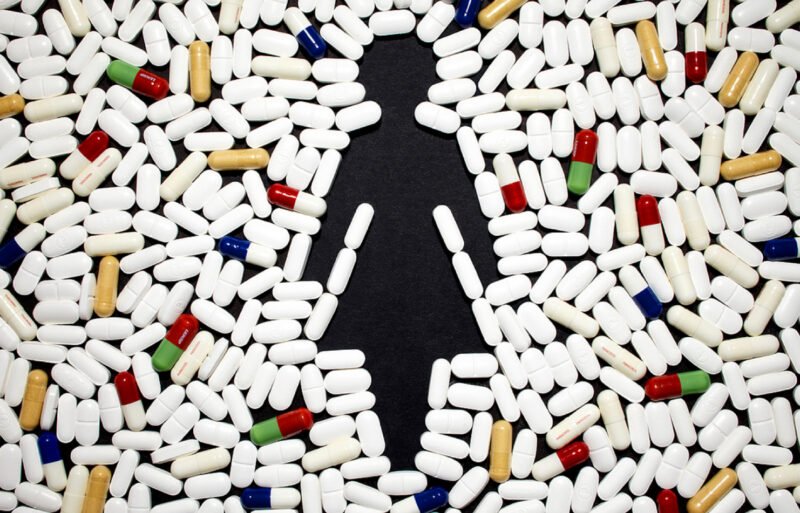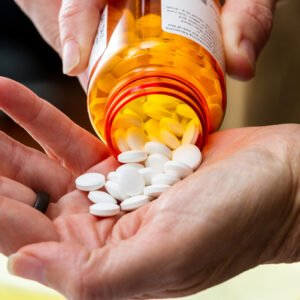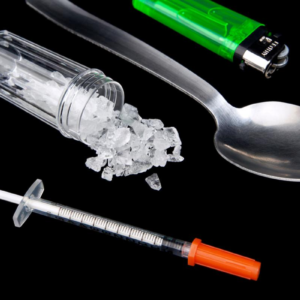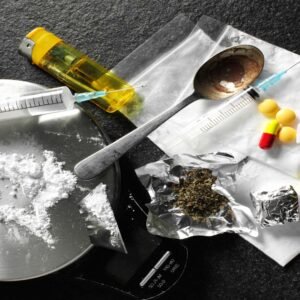
Introduction
Have you ever wondered how a simple prescription can lead to a life-altering addiction? It’s a question that haunts many, especially in today’s world where the line between medical necessity and dependency can blur all too easily. Let’s take a deep dive into this perilous journey, exploring the intricate path from prescription to addiction.
The Beginning: The Prescription
Understanding the Prescription
When a doctor hands over a prescription, it often feels like a lifeline. Whether it’s for chronic pain, post-surgery recovery, or a mental health condition, that piece of paper promises relief. But what happens when that relief turns into reliance?
The Role of Opioids
Opioids are frequently prescribed for pain management. Medications like OxyContin, Vicodin, and Percocet can be incredibly effective. However, their powerful effects come with a dark side. These drugs interact with brain receptors, dulling pain but also producing feelings of euphoria.
The Slippery Slope
Imagine standing on a snowy hill. At first, you’re steady. But with each step, the ground gets slicker. That’s how it feels with opioids. Initially, they’re taken as directed. Yet, as tolerance builds, the need for higher doses creeps in, often unnoticed.
The Descent: Increased Tolerance and Dependency
What is Tolerance?
Tolerance is when your body gets used to a drug, requiring more to achieve the same effect. It’s like drinking coffee – one cup used to jolt you awake, but now you need three. For opioids, this can mean escalating from prescribed doses to dangerously high amounts.
Dependency vs. Addiction
It’s crucial to differentiate between dependency and addiction. Dependency is a physical need – your body craves the drug to function normally. Addiction, on the other hand, is a psychological compulsion. You’re not just needing it; you’re obsessing over it.
The Warning Signs
Do you find yourself taking more pills than prescribed? Or perhaps you’re noticing mood swings, anxiety, or even withdrawal symptoms like nausea and headaches when you don’t take the medication. These are red flags signaling a shift from use to misuse.
The Plunge: From Dependency to Addiction
Crossing the Line
There’s a fine line between dependency and addiction. Picture it as a tightrope. Initially, you’re balancing well. But soon, the urge to take just one more pill tips you over. You’re no longer in control; the drug is.
Behavioral Changes
One of the first indicators of addiction is behavioral changes. Have you become secretive about your medication use? Are you visiting multiple doctors to get extra prescriptions? These behaviors often stem from a desperate need to feed the addiction.
Impact on Daily Life
Addiction doesn’t just affect the user; it ripples through their entire life. Relationships strain under the weight of secrecy and mood swings. Work performance plummets, and social activities become secondary to the quest for more pills.
The Abyss: The Consequences of Addiction
Health Implications
Addiction wreaks havoc on your health. Beyond the risk of overdose, chronic opioid use can lead to severe constipation, liver damage, and even brain changes. It’s like rust slowly corroding a metal pipe – damage accumulates over time.
Emotional and Mental Toll
The emotional toll is equally devastating. Feelings of guilt, shame, and hopelessness often accompany addiction. It’s a relentless cycle of wanting to quit but feeling powerless to do so. Imagine being trapped in a maze with no exit in sight.
Social and Financial Ruin
Addiction often leads to financial hardship. The cost of obtaining drugs, coupled with potential job loss, can drain savings and lead to debt. Socially, it isolates you. Friends and family may distance themselves, not knowing how to help.
The Climb: Seeking Help and Recovery
Recognizing the Problem
The first step towards recovery is acknowledging the problem. It’s like shining a flashlight in a dark room – suddenly, you see the mess clearly. Admitting you need help is a brave and crucial step.
Professional Help
Recovery usually requires professional intervention. Rehab centers offer structured programs, including detoxification, counseling, and therapy. It’s akin to having a guide while navigating treacherous terrain – their expertise can lead you to safety.
Support Systems
Never underestimate the power of support systems. Whether it’s family, friends, or support groups, having people who understand and encourage you can make all the difference. Think of them as your safety net, catching you when you falter.
The Road to Recovery: Steps to Rebuild
Detoxification
Detox is often the first step. It involves purging the body of the drug under medical supervision. This can be a grueling process, but it’s necessary. Imagine clearing out a clogged drain – it’s messy, but the flow of life improves afterward.
Therapy and Counseling
Therapy helps address the underlying issues that led to addiction. Cognitive-behavioral therapy (CBT), for instance, teaches coping mechanisms and alters negative thought patterns. It’s like rewiring a faulty electrical system to prevent future breakdowns.
Medication-Assisted Treatment (MAT)
For some, Medication-Assisted Treatment (MAT) can be beneficial. Drugs like methadone or buprenorphine help reduce cravings and withdrawal symptoms. It’s akin to using a crutch while healing from a broken leg – temporary but essential support.
Lifestyle Changes
Recovery isn’t just about quitting drugs; it’s about rebuilding a healthier life. This includes adopting new hobbies, exercising, and eating well. Picture it as planting a garden – with time and care, it blossoms into something beautiful.
The Importance of Relapse Prevention
Understanding Triggers
Triggers are situations or feelings that spark the desire to use drugs again. Identifying and avoiding them is crucial. It’s like knowing which roads flood during a storm – better to steer clear than risk getting stuck.
Building Resilience
Building resilience involves strengthening your ability to cope with stress and setbacks. Techniques like mindfulness and meditation can be incredibly helpful. Think of it as fortifying a dam – it helps withstand the pressures of life.
Staying Connected
Staying connected with support groups and therapy can provide ongoing encouragement and accountability. It’s like having a GPS system – guiding you and correcting your course when needed.
Stories of Hope: Real-Life Recoveries
Sarah’s Journey
Sarah was prescribed opioids after a car accident. What started as pain management spiraled into addiction. With the help of her family and a dedicated rehab program, she’s now three years sober, pursuing a degree in counseling to help others.
John’s Recovery
John’s story is one of resilience. After a sports injury, he became dependent on painkillers. Recognizing his downward spiral, he sought help and embraced a new lifestyle. Today, he’s an advocate for addiction awareness, sharing his story to inspire others.
Maria’s Triumph
Maria’s addiction began with a prescription for anxiety. When she realized the toll it was taking on her life, she reached out for help. Through therapy and support groups, she’s reclaimed her life and now runs a blog to support others facing similar struggles.
Conclusion
The journey from prescription to addiction is a dangerous one, but it’s not a one-way street. With the right support and determination, recovery is possible. It’s a path fraught with challenges, but also with hope and the possibility of a brighter future. If you or someone you know is struggling, remember – it’s never too late to seek help and start the journey towards recovery.


